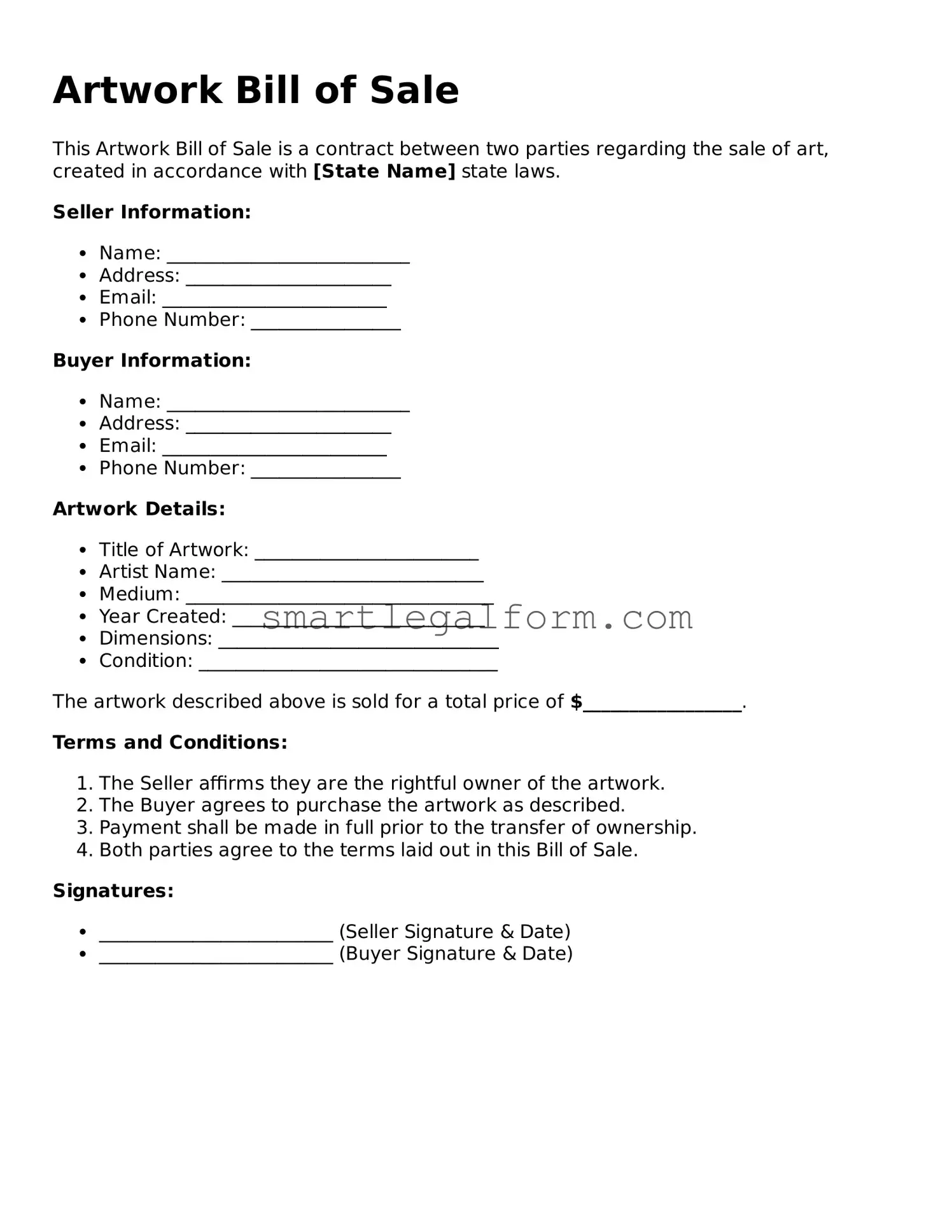When filling out an Artwork Bill of Sale form, it’s crucial to ensure accuracy and completeness. Many individuals, however, make common mistakes that can lead to confusion or legal issues later on. One prevalent error is failing to provide all necessary details about the artwork. This includes not only the title and artist but also specifics such as dimensions, medium, and any unique identifiers. Omitting this information can lead to disputes regarding the artwork's authenticity or ownership.
Another mistake often encountered is neglecting to include the purchase price. This detail is essential for both the buyer and seller, as it serves as a record of the transaction. Without a clear price, it becomes challenging to establish the value of the artwork for future sales or insurance purposes.
Many people also overlook the importance of signatures. Both the buyer and seller should sign the form to validate the transaction. Failing to obtain a signature from one party can render the bill of sale ineffective, leaving room for misunderstandings or claims of fraud.
In addition, using vague language can create complications. Describing the artwork in ambiguous terms may lead to differing interpretations. It’s best to use clear and precise language to avoid any potential disputes about what was sold.
Another frequent oversight is not providing a date for the transaction. A date is crucial for establishing when the sale occurred, which can be important for tax purposes or in the event of a dispute. Without a date, the timeline of ownership may become unclear.
Some individuals fail to check local laws regarding the sale of artwork. Different states may have specific requirements for a bill of sale, and not adhering to these can lead to complications. It’s wise to research any applicable regulations to ensure compliance.
Additionally, neglecting to keep copies of the signed bill of sale is a common error. Both parties should retain a copy for their records. This documentation can be vital for future reference, especially if questions about the sale arise later.
Another mistake involves not including any warranties or disclaimers. If the seller offers a guarantee regarding the artwork’s condition or authenticity, this should be clearly stated in the bill of sale. Without such provisions, the buyer may have limited recourse if issues arise post-sale.
Furthermore, many individuals forget to include contact information for both parties. This information can be crucial if there are follow-up questions or concerns about the transaction. Including full names, addresses, and phone numbers fosters transparency and accountability.
Lastly, not reviewing the completed form before finalizing it is a common pitfall. Taking the time to double-check all entries can help catch any errors or omissions. A thorough review ensures that the bill of sale accurately reflects the terms of the agreement and protects both parties involved.
